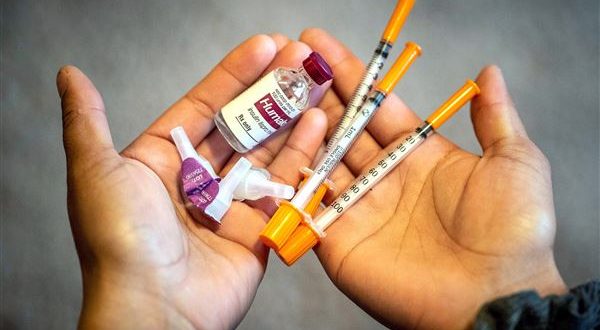COVID-19 has gripped national headlines for months. But long before the U.S. outbreak of the novel coronavirus, the country was battling another deadly epidemic: diabetes.
One of the leading causes of death in the United States, the disease claims the lives of more than 83,000 Americans each year. And — much like the COVID-19 — diabetes disproportionately impacts people of color.
That’s why it’s so encouraging that the Trump administration will soon make it easier for millions of diabetic Americans to manage their health. A newly announced proposal would cap the amount of money that Medicare beneficiaries pay out-of-pocket for insulin at $35.
That reform will go a long way towards getting older patients with diabetes the medicines they need to stay healthy — a fact that’s certainly worth celebrating. But it’s only one step toward tackling a health crisis that shows no signs of relenting.
Diabetes doesn’t affect all groups equally. Black Americans are 60 percent more likely to be diagnosed with diabetes than whites. Black women are particularly vulnerable — nearly 13 percent of Black women over 18 have the disease, compared with just 7.5 percent of white women.
For many of these patients, staying alive requires rigorous adherence to a medication regimen, including regular injections of insulin.
Unfortunately, these medicines can prove prohibitively expensive. In one recent survey, a quarter of diabetic patients reported using less than the prescribed amount of insulin because of the medicine’s cost.
The persistent wealth and income gap between Americans of color and white Americans means that these financial burdens pose a unique challenge for black patients. Especially in the midst of the COVID-19 pandemic, the inability to afford insulin has only deepened racial inequities that have plagued our nation for decades.
After all, those with diabetes who are unable to manage their disease effectively — a group in which African Americans are overrepresented — are at heightened risk of severe complications from COVID-19. According to the Centers for Disease Control, black Americans account for 23 percent of deaths from the novel coronavirus, despite making up just 13 percent of the population.
Reforms that enable patients of color to better manage their diabetes could vastly reduce such healthcare disparities. We hope that’s precisely what the administration’s newly announced proposal will do.
Under this reform, more than 1,750 Medicare prescription drug plans will cap out-of-pocket costs for a variety of insulin products at $35 a month. That change will take effect next year. This will bring down pharmacy costs for the millions of Medicare seniors with diabetes — including black Americans.
But given the scope of the challenges facing diabetic patients, this reform still represents a modest improvement over the status quo. For systemic change, patients need policies that target the real drivers of high insulin costs.
That begins with the opaque system that brings medicines to pharmacies. Every year, manufacturers provide over $100 billion in rebates and other price reductions on brand name drugs. But supply chain middlemen have pocketed these savings instead of passing them on to patients at the point of sale.
Other drivers abound. Policymakers need to do everything they can to help less advantaged patients afford insulin. And on that measure, the administration’s new Medicare proposal is one step in the right direction.
 Westside Story Newspaper – Online The News of The Empire – Sharing the Quest for Excellence
Westside Story Newspaper – Online The News of The Empire – Sharing the Quest for Excellence




